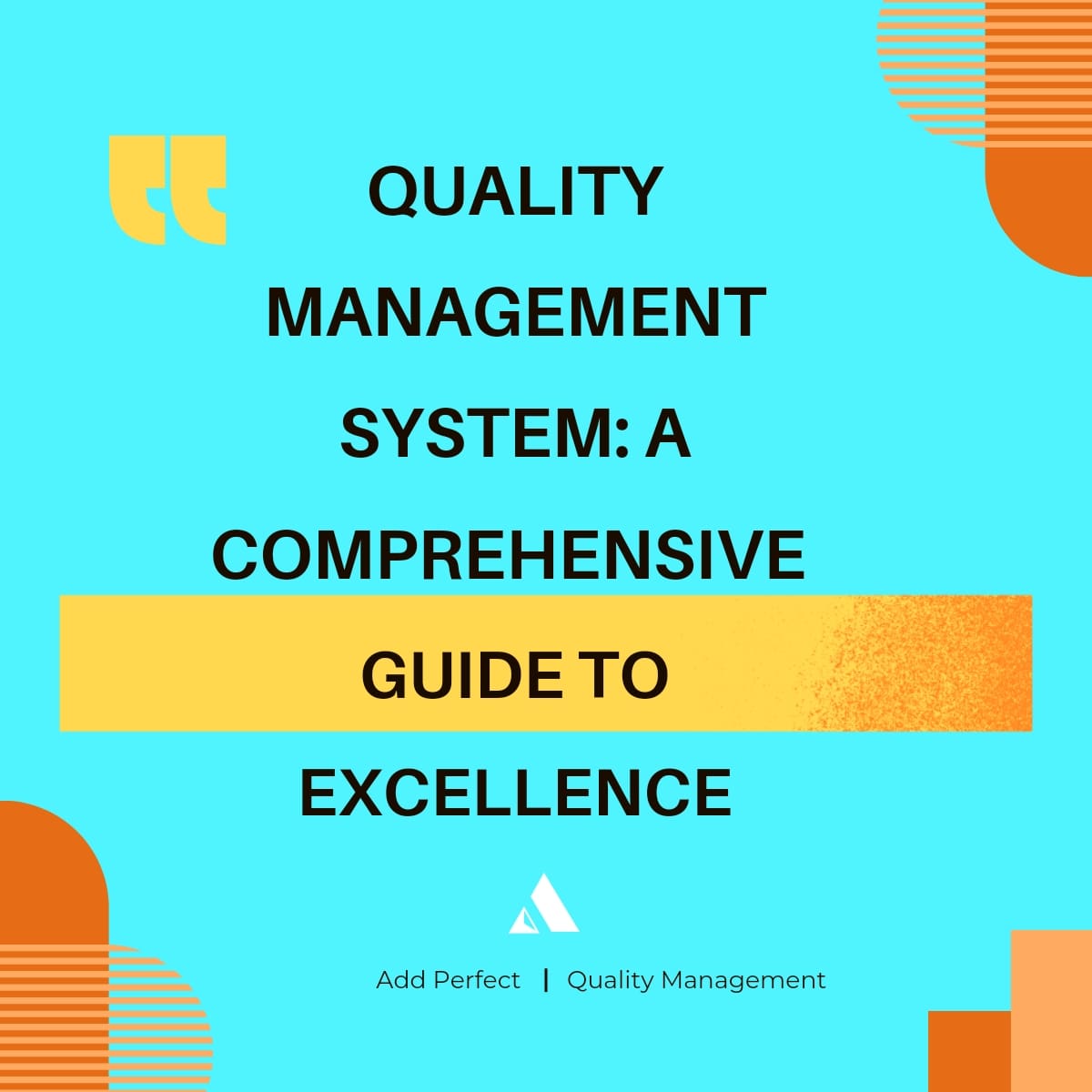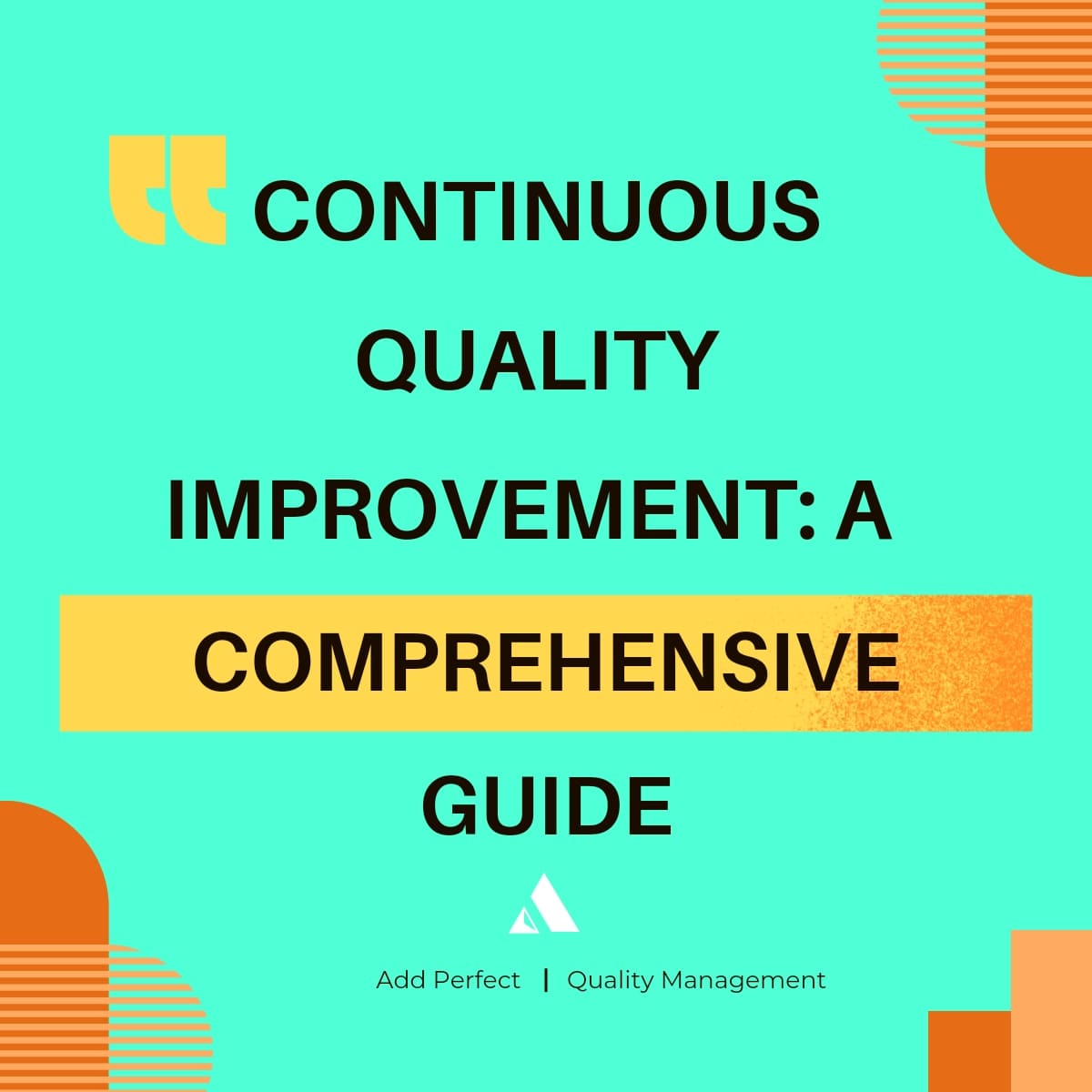Discover the fundamental Quality Management Principles that drive organizational success, ensuring high standards and continuous improvement in quality management.

Introduction
In the modern business landscape, maintaining high-quality standards is crucial for achieving long-term success. Quality Management Principles provide a structured framework that helps organizations consistently deliver high-quality products and services. This article explores the core Quality Management Principles, their applications, and how they benefit various industries.
Understanding Quality Management Principles
Quality Management Principles are a set of fundamental beliefs, norms, rules, and values that are accepted as true and serve as the foundation for quality management. These principles guide the way organizations should operate to achieve quality excellence.
The Eight Quality Management Principles
The International Organization for Standardization (ISO) outlines eight Quality Management Principles that serve as a foundation for the ISO 9001 standard. These principles are:
- Customer Focus
- Leadership
- Engagement of People
- Process Approach
- Improvement
- Evidence-Based Decision Making
- Relationship Management
Detailed Overview of Quality Management Principles
1. Customer Focus
Organizations depend on their customers and should strive to understand and meet customer needs and expectations.
Applications:
- Conducting market research to understand customer needs
- Implementing customer feedback systems
- Tailoring products and services to meet customer requirements
Benefits:
- Increased customer satisfaction
- Enhanced customer loyalty
- Improved market share
| Customer Focus Strategies |
|---|
| Action |
| Customer Surveys |
| Feedback Systems |
| Customization |
2. Leadership
Leaders at all levels establish unity of purpose and direction and create conditions that engage people in achieving the organization’s quality objectives.
Applications:
- Setting clear vision and mission statements
- Communicating organizational goals
- Encouraging employee participation in decision-making
Benefits:
- Increased employee engagement
- Clear direction and purpose
- Enhanced organizational culture
| Leadership Strategies |
|---|
| Action |
| Vision Statements |
| Open Communication |
| Decision-Making Inclusion |
3. Engagement of People
Competent, empowered, and engaged people at all levels enhance the organization’s capability to create and deliver value.
Applications:
- Providing training and development opportunities
- Encouraging teamwork and collaboration
- Recognizing and rewarding employee contributions
Benefits:
- Improved employee performance
- Higher job satisfaction
- Enhanced innovation
| Engagement Strategies |
|---|
| Action |
| Training Programs |
| Team-Building Activities |
| Reward Systems |
4. Process Approach
Consistent and predictable results are achieved more effectively and efficiently when activities are understood and managed as interrelated processes.
Applications:
- Mapping out business processes
- Identifying and managing process interactions
- Continuously monitoring and optimizing processes
Benefits:
- Improved process efficiency
- Reduced waste and errors
- Enhanced product quality
| Process Approach Strategies |
|---|
| Action |
| Process Mapping |
| Interaction Management |
| Continuous Monitoring |
5. Improvement
Successful organizations have an ongoing focus on improvement.
Applications:
- Implementing continuous improvement methodologies (e.g., Kaizen, Six Sigma)
- Setting and reviewing improvement objectives
- Encouraging innovation and creativity
Benefits:
- Increased operational efficiency
- Enhanced adaptability to change
- Sustained competitive advantage
| Improvement Strategies |
|---|
| Action |
| Continuous Improvement |
| Innovation Encouragement |
| Objective Review |
6. Evidence-Based Decision Making
Decisions based on the analysis and evaluation of data and information are more likely to produce desired results.
Applications:
- Collecting and analyzing relevant data
- Using statistical tools to interpret data
- Making informed decisions based on data insights
Benefits:
- Improved decision-making accuracy
- Enhanced problem-solving capabilities
- Better resource management
| Evidence-Based Decision Making Strategies |
|---|
| Action |
| Data Collection |
| Statistical Analysis |
| Data-Driven Decisions |
7. Relationship Management
For sustained success, organizations manage their relationships with interested parties, such as suppliers, customers, and employees.
Applications:
- Developing strong supplier relationships
- Engaging stakeholders in decision-making processes
- Building trust with customers and employees
Benefits:
- Improved collaboration and trust
- Enhanced supply chain efficiency
- Stronger stakeholder engagement
| Relationship Management Strategies |
|---|
| Action |
| Supplier Collaboration |
| Stakeholder Engagement |
| Customer Trust Building |
Implementing Quality Management Principles in Different Industries
The Quality Management Principles are vital across various industries. Here’s how they apply to a few key sectors:
Manufacturing
In manufacturing, Quality Management Principles ensure that products meet quality standards and customer expectations.
- Customer Focus: Understanding market demands and tailoring products accordingly.
- Process Approach: Streamlining production processes for efficiency.
- Improvement: Continuously enhancing manufacturing techniques.
Healthcare
In healthcare, Quality Management Principles ensure that patient care and medical services adhere to regulatory standards.
- Engagement of People: Training medical staff to ensure high-quality care.
- Evidence-Based Decision Making: Using patient data to inform treatment plans.
- Relationship Management: Building trust with patients and their families.
Software Development
In software development, Quality Management Principles ensure software meets user requirements and is free from defects.
- Leadership: Setting clear development goals and objectives.
- Improvement: Regularly updating software to fix bugs and add new features.
- Customer Focus: Gathering user feedback to enhance the user experience.
Benefits of Quality Management Principles
Implementing Quality Management Principles offers numerous benefits:
- Consistency: Ensures products consistently meet quality standards.
- Accountability: Assigns responsibility for quality at all organizational levels.
- Efficiency: Streamlines processes, reducing waste and rework.
- Compliance: Helps adhere to regulatory and industry standards.
- Customer Satisfaction: High-quality products lead to increased customer trust and loyalty.
- Cost Reduction: Prevents defects, reducing costs associated with rework and returns.
Challenges in Implementing Quality Management Principles
While Quality Management Principles offer many benefits, they also present challenges:
- Resource Intensive: Requires time and resources to develop and maintain.
- Resistance to Change: Employees may resist new procedures and checks.
- Complexity: Managing and updating principles for different products can be complex.
- Continuous Monitoring: Requires ongoing inspections and updates to remain effective.
Overcoming Challenges in Quality Management Principles
To successfully implement Quality Management Principles, organizations can adopt several strategies:
- Top-Down Commitment: Ensure leadership prioritizes quality management.
- Employee Training: Train employees on the importance and use of quality management principles.
- Clear Communication: Communicate the benefits of the principles clearly.
- Regular Updates: Keep the principles updated to reflect current standards and practices.
- Use of Technology: Utilize quality management software to streamline the process.

Case Study: Successful Implementation of Quality Management Principles
Company A: Manufacturing Industry
Company A, a leading manufacturer of consumer electronics, implemented Quality Management Principles to address quality issues. By focusing on customer feedback and continuous improvement, they reduced defects by 25% and improved customer satisfaction.
Company B: Healthcare
Company B, a healthcare provider, faced challenges with patient satisfaction and regulatory compliance. Implementing Quality Management Principles such as evidence-based decision-making and process approach, they improved patient outcomes and adherence to regulations.
Frequently Asked Questions about Quality Management Principles
1. What is the main goal of Quality Management Principles?
- The main goal is to ensure that products or services meet predefined quality standards consistently.
2. How do Quality Management Principles differ from Quality Control Tools?
- Quality Management Principles provide a framework for overall quality management, while Quality Control Tools focus on identifying and correcting defects in products.
3. Can Quality Management Principles be applied to small businesses?
- Yes, Quality Management Principles can be scaled to fit the needs and resources of small businesses, helping them ensure product quality and customer satisfaction.
4. What are some common challenges in implementing Quality Management Principles?
- Common challenges include resource intensity, resistance to change, complexity, and the need for continuous monitoring.
5. How often should Quality Management Principles be reviewed and updated?
- Quality Management Principles should be reviewed regularly, at least annually, or whenever significant changes occur in quality standards or production processes.
Conclusion
Quality Management Principles are essential for maintaining high standards in quality management. By utilizing these principles, organizations can ensure that products and services consistently meet customer expectations and regulatory requirements. Implementing these principles leads to increased efficiency, reduced waste, and enhanced customer satisfaction, ultimately driving organizational success.




Temp Mail Very well presented. Every quote was awesome and thanks for sharing the content. Keep sharing and keep motivating others.